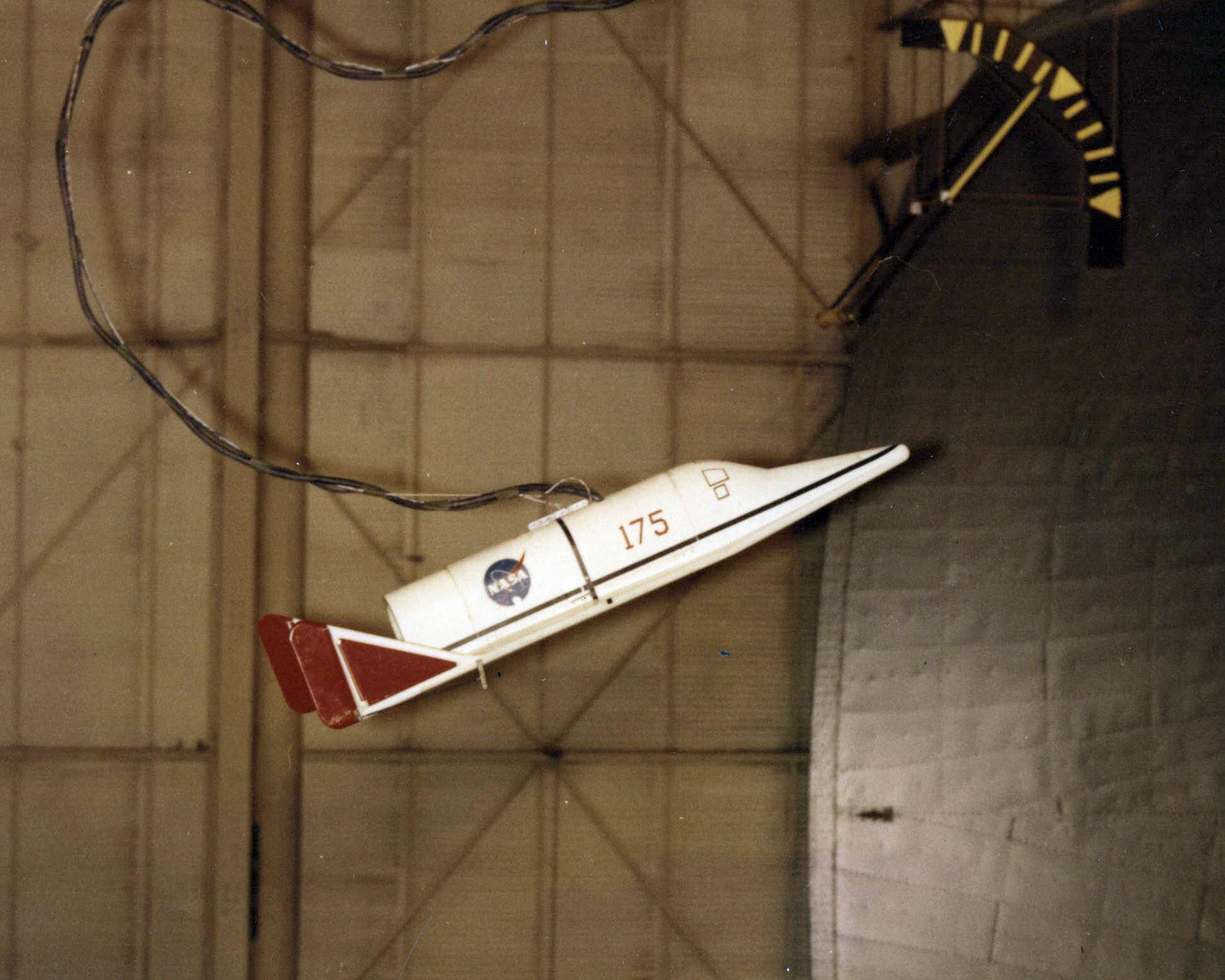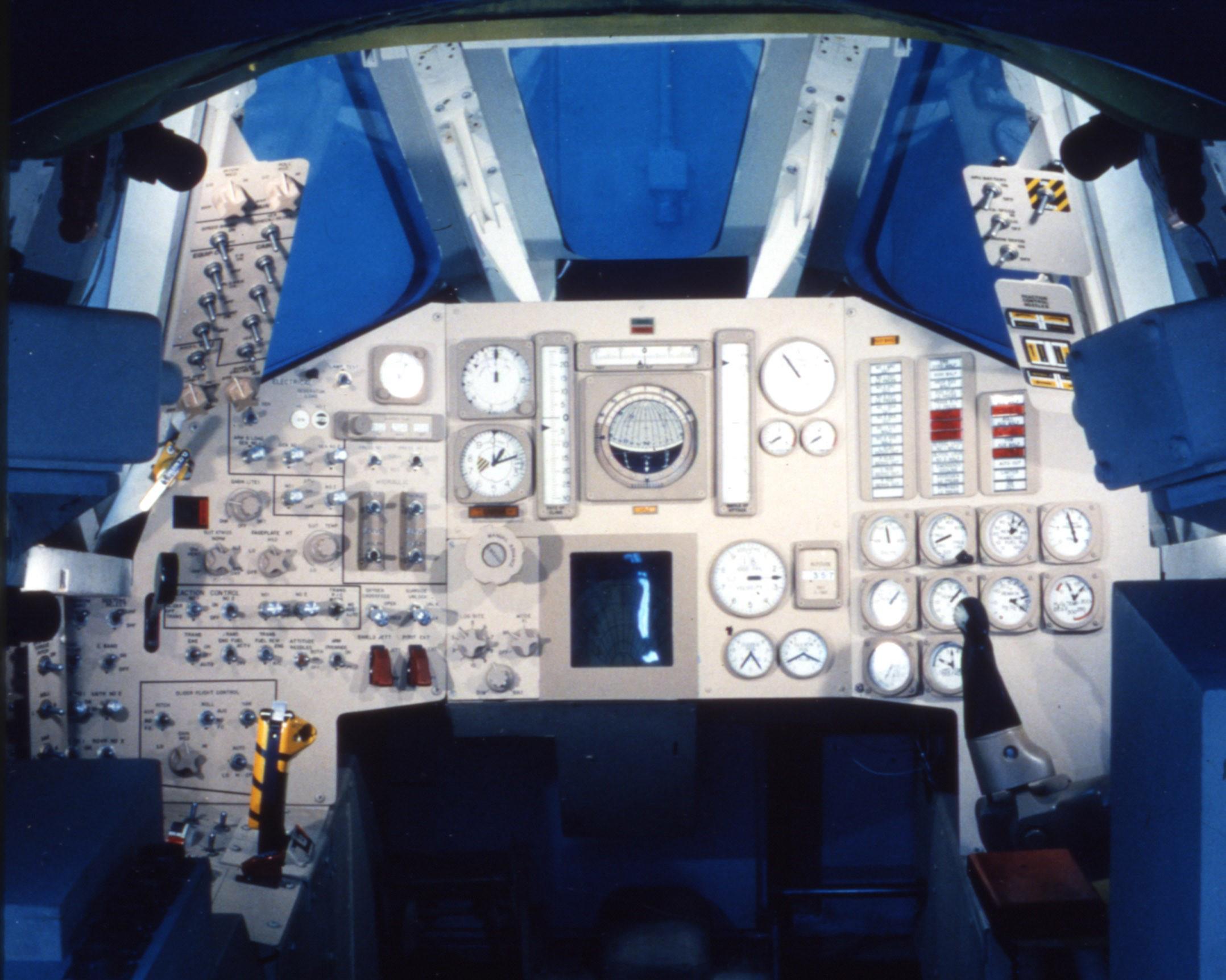The Dyna-Soar program (System 464L), initiated on October 10, 1957, took three separate, but related studies on manned, hypersonic weapons and reconnaissance systems (Hywards (SR-131), Bomi/Brass Bell (SR-12) and Robo (SR-126)) and merged them into a single, three-phased program. The research conducted, knowledge gained and the technological advances made during the course of program (1957-1963), would be applied to the X-15 test program, both of which would help guide later experimental test vehicles like the X-40 and X-37 as well as the development of the Space Shuttle orbiter.
 The Boeing X-20 was designed to be a manned, reusable, hypersonic glider boosted to suborbital velocities by a modified version of a Titan ICBM booster; the Air Force contracted the Titan booster modification to the Martin Company. Models of the glider went through “the most exhaustive wind tunnel program in the history of flight,” as it was the first vehicle of its kind attempt that could survive blazing hypersonic speeds; nearly every major wind tunnel facility in the United States contributed to the development of the Dyna-Soar glider.
The Boeing X-20 was designed to be a manned, reusable, hypersonic glider boosted to suborbital velocities by a modified version of a Titan ICBM booster; the Air Force contracted the Titan booster modification to the Martin Company. Models of the glider went through “the most exhaustive wind tunnel program in the history of flight,” as it was the first vehicle of its kind attempt that could survive blazing hypersonic speeds; nearly every major wind tunnel facility in the United States contributed to the development of the Dyna-Soar glider.
Researching hypersonic, exo-atmospheric flight was logically a priority for NASA. However, the gains being made by the Soviet space program concerned the Department of Defense, which increasingly viewed space as a potential new theater for military operations. Thus, a boost-glider capable of conducting reconnaissance missions and bombing operations was obviously attractive to American military planners; the Dyna-Soar program provided a convenient medium through which to advance both agendas. The Air Force exercised technical control over the program, specifically its System Program Office within the Air Force Systems Command (AFSC), at that time based at Wright-Patterson Air Force Base, Ohio. AFSC personnel, however, worked closely with NASA scientists to “maximize the vehicle’s capabilities from both the military weapon system development and aeronautical research viewpoints.”
In total, the program cost roughly $853.23 million and failed to deliver a completed glider before being cancelled in December 1963. Nevertheless, the Dyna-Soar program initiated the study of hypersonic (Mach 5-10) flight; many of the vehicle’s sub-systems were utilized in the testing later flights of the X-15 and led to important advances in our understanding of re-entry technologies, pilot control of boost trajectories, heat protection systems, pilots’ full pressure suit, ultra-high temperature resistant materials such as the vehicle’s ceramic nose cap, the VHF search and rescue receiver and transmitter, crew station simulations as well as sensor and transducer equipment for telemetry, all of which proved valuable in building the Space Shuttle orbiter.
initiated the study of hypersonic (Mach 5-10) flight; many of the vehicle’s sub-systems were utilized in the testing later flights of the X-15 and led to important advances in our understanding of re-entry technologies, pilot control of boost trajectories, heat protection systems, pilots’ full pressure suit, ultra-high temperature resistant materials such as the vehicle’s ceramic nose cap, the VHF search and rescue receiver and transmitter, crew station simulations as well as sensor and transducer equipment for telemetry, all of which proved valuable in building the Space Shuttle orbiter.
Full PDF Download: Dyna-Soar